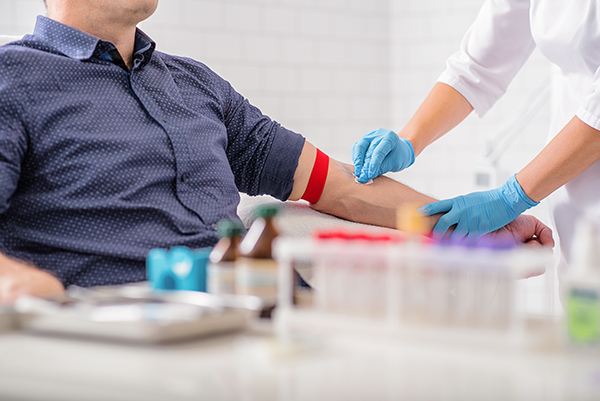Physicians who treated Central Oregon’s first COVID-19 patient to receive a transfusion of convalescent plasma cannot say with certainty how much the blood product helped 53-year-old Liliana Locke, who is now recovering at home.
But anecdotal results and early findings by the Mayo Clinic, which is coordinating the national expanded access protocol used to provide the plasma, are positive enough to encourage recovered COVID-19 patients to consider a donation, said Dr. Anna Dolezal, a pathologist with Central Oregon Pathology Consultants and acting medical director of the St. Charles Blood Bank.
“Among the first 5,000 patients who received convalescent plasma through that program, the incidence of serious adverse events was very low,” Dolezal said. “So what we can take from that is that infusing COVID-19 patients with convalescent plasma appears to be a safe procedure, and this initiative will continue nationally.”
In fact, the American Red Cross recently expanded its criteria for who can donate convalescent plasma. Until late April, donors must have tested positive for COVID-19 and fully recovered. (People who have fully recovered from the virus have antibodies in their plasma that can attack the virus and may help people fight the disease.) On April 27, however, the Red Cross began allowing people who don’t have a positive test but are certain they had COVID-19 to donate plasma. Those donations are tested for antibodies, allowing the Red Cross to simplify the eligibility process and qualify more potential donors.
Earlier data available from studies indicated that a single 200 mL dose of convalescent plasma showed benefit for some patients, leading to improvement. And while the Mayo Clinic’s program isn’t a randomized clinical trial and is designed primarily to ensure safety, data from the first 5,000 patients enrolled in the protocol did show some promising results and also noted "with optimism the relatively low mortality in treated patients." This included a trend toward decreased mortality at seven days (14.9%) compared to average mortality for patients with COVID-19 in the hospital (15-20%) and ICU (57%).
Dolezal emphasized: “While there is still much work to be done to tease out the true efficacy of this treatment – as is true at this time with all treatments being explored for COVID-19 – the initial report from Mayo looks promising to me. If we can make convalescent plasma available to more COVID patients earlier in their hospital course, I’m hopeful that it can make a potentially life-saving difference in their outcome.”
Use of convalescent plasma has been studied in outbreaks of other respiratory infections, including the 2003 SARS-CoV-1 epidemic, the 2009-2010 H1N1 influenza virus pandemic and the 2012 MERS-CoV epidemic, according to the FDA.
Given the severity of the pandemic and lack of other available treatments for COVID-19, the U.S. Food and Drug Administration approved its use as an investigational new drug in late March. Since that time, blood suppliers have been working tirelessly to increase the pool of available plasma.
To schedule an appointment to donate COVID-19 convalescent plasma or other blood products, contact American Red Cross Blood Services at 1-800-RED-CROSS or https://www.redcrossblood.org/. More information can be found at the following links:
Eligibility requirements and a donor eligibility form
Frequently asked questions, including sections on COVID-19 and donating convalescent plasma.





